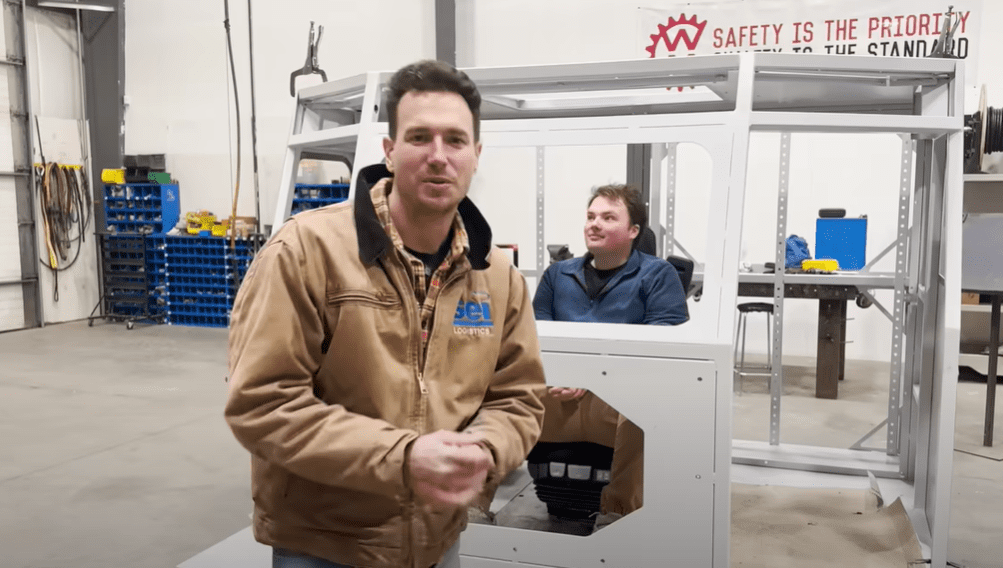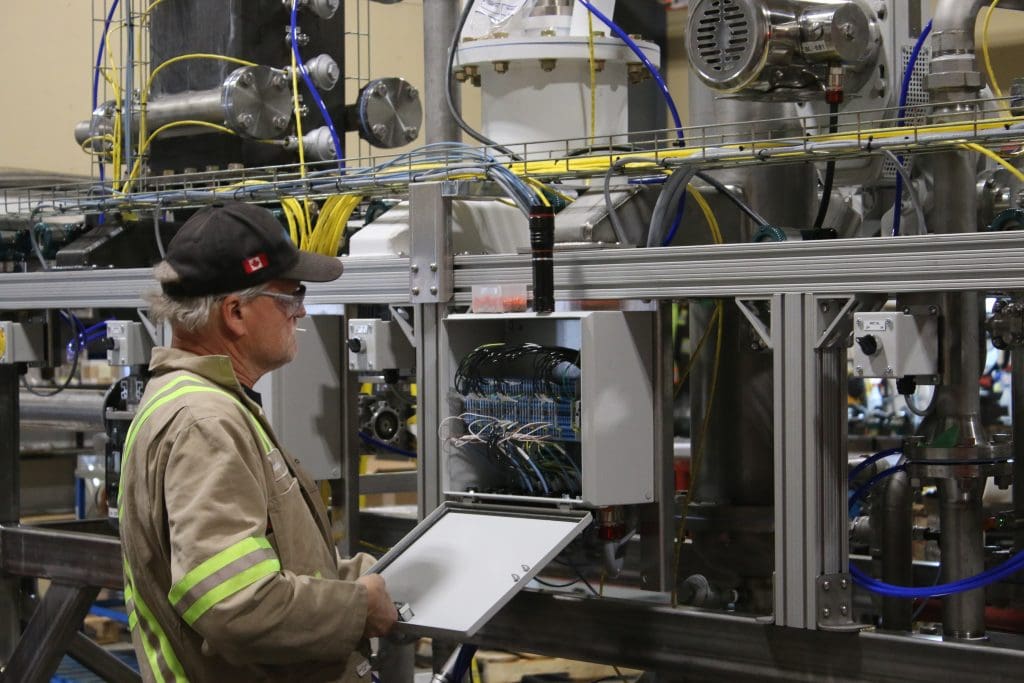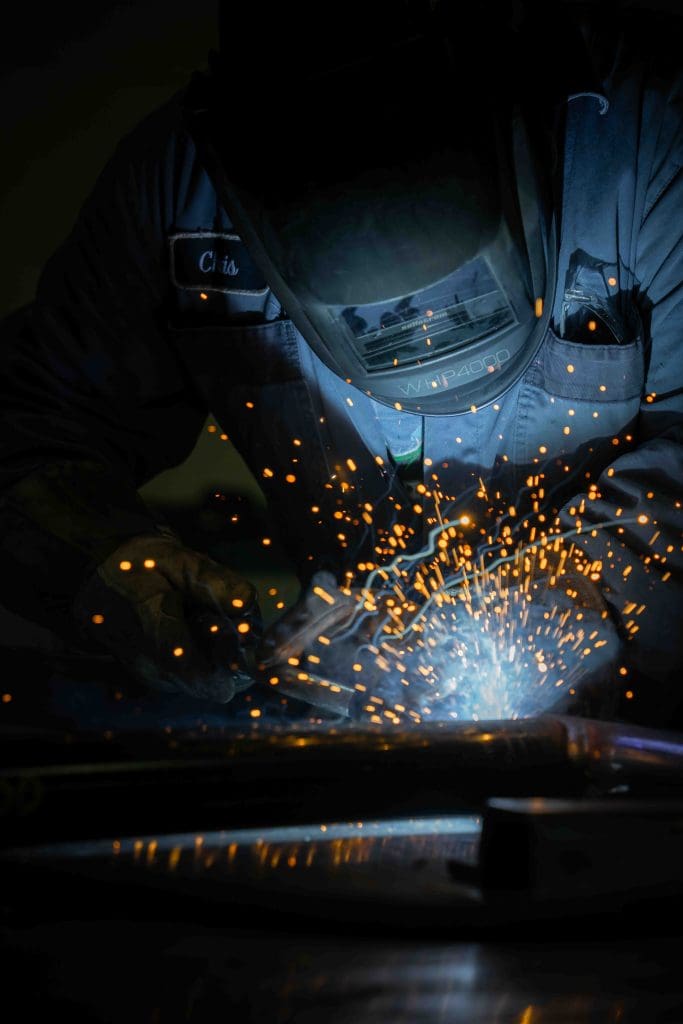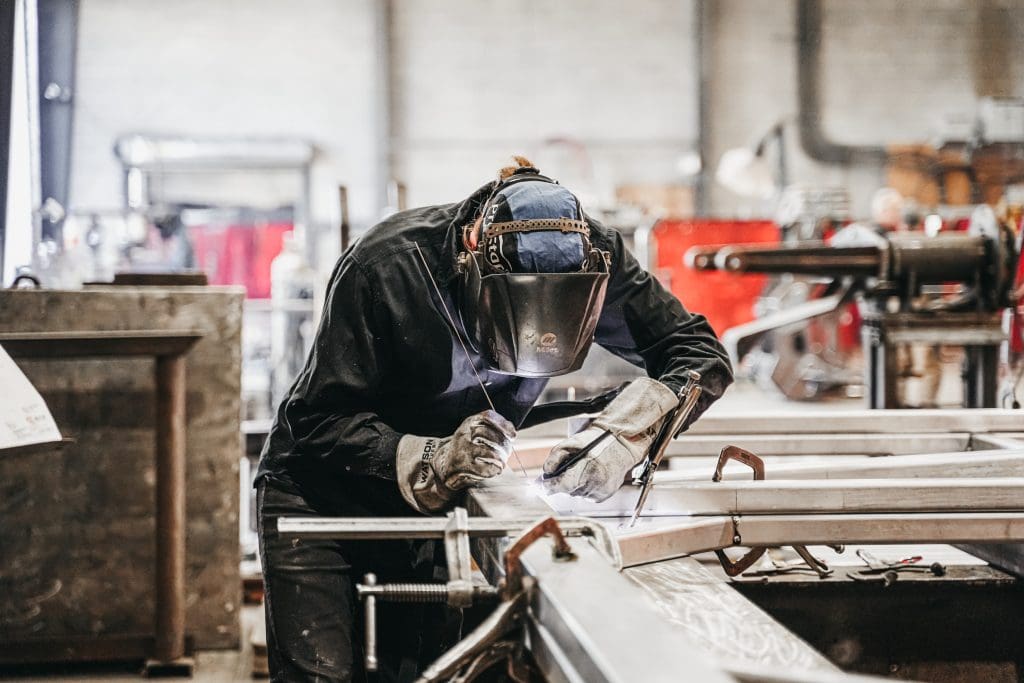What is Design for Manufacturability (DFM)?
Design for Manufacturability (DFM) is a critical practice for engineers and product teams working on custom industrial machinery. It involves optimizing the design of a part or system to make it easier, faster, and more cost-effective to manufacture. At Waycon, we emphasize DFM principles throughout the lifecycle of every custom equipment project from CAD development to precision CNC machining and final fabrication.
Why DFM Matters in Custom Machine Projects
Custom machinery often involves one-off or low-volume builds, which increases the need for thoughtful design. Proper DFM:
- Reduces cost and complexity
- Speeds up production
- Prevents common prototyping mistakes
By implementing DFM early, teams avoid revisions that delay timelines or inflate budgets.
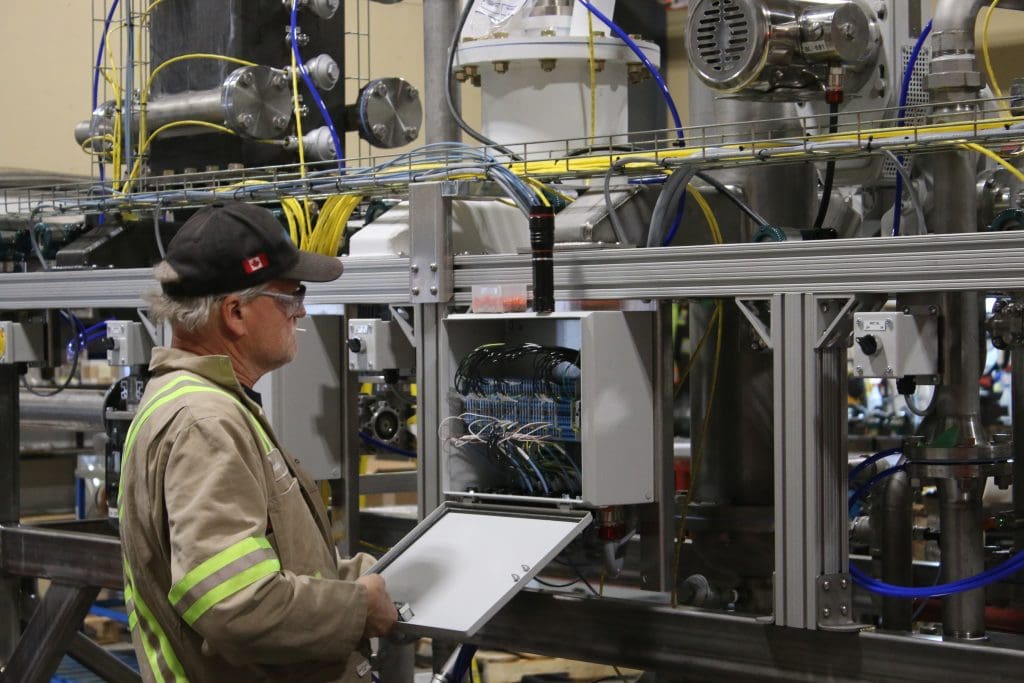
Cost, Quality, and Lead Time Implications
Without DFM, even well-engineered parts can become manufacturing bottlenecks. Common issues include:
- Unnecessarily tight tolerances
- Non-standard materials or sizes
- Toolpath inefficiencies
Waycon’s team collaborates with OEMs to improve their manufacturing-friendly design files, ensuring cost-efficiency without compromising performance.
The Role of DFM in CNC Machining and Fabrication
DFM directly impacts how a part is machined, welded, or assembled. CNC shops like Waycon evaluate:
- Tool accessibility
- Material behavior
- Setup and fixturing needs
Incorporating DFM ensures that parts are not only functional but also optimized for real-world machining on custom machinery projects.
Tip #1 – Simplify Complex Geometries Early
Avoid Overly Intricate Internal Cavities
Deep, narrow, or non-linear cavities require specialized tools and slow feed rates, increasing time and cost.
- Use through-holes instead of blind cavities where possible.
- Split complex geometries into multiple, joinable parts.
- Minimize unreachable internal corners.
Simpler shapes reduce CNC runtime and tooling wear, especially for parts built for industries like mining equipment fabrication.
Use Standard Sizes and Radii for Easier Tooling
Tool standardization improves availability and shortens programming time:
- Stick to common drill diameters (e.g., 0.25″, 0.5″).
- Use consistent fillet radii that match end mill sizes.
- Avoid micro features requiring specialty tooling.
This approach enhances shop floor efficiency and reduces risk during CNC setup.
Reduce Axis Requirements (2.5D vs 5-Axis)
Not every feature needs complex, multi-axis machining:
- Design parts for 2.5D setups when possible.
- Avoid excessive undercuts and compound curves.
- Break up parts needing 5-axis into modular designs.
Lower axis requirements help shorten lead times and reduce machining cost.
Tip #2 – Choose Materials Strategically
Match Material to Machining Capability (Aluminum, Mild Steel, etc.)
Selecting the right material affects tool wear, feed rates, and finish quality:
- Aluminum: Excellent for fast CNC jobs and prototypes.
- Mild Steel: Durable and cost-effective for structural parts.
- Stainless or Alloy Steel: Use only when strength or heat resistance is critical.
Waycon helps OEM clients choose materials that balance performance with efficient machinability.
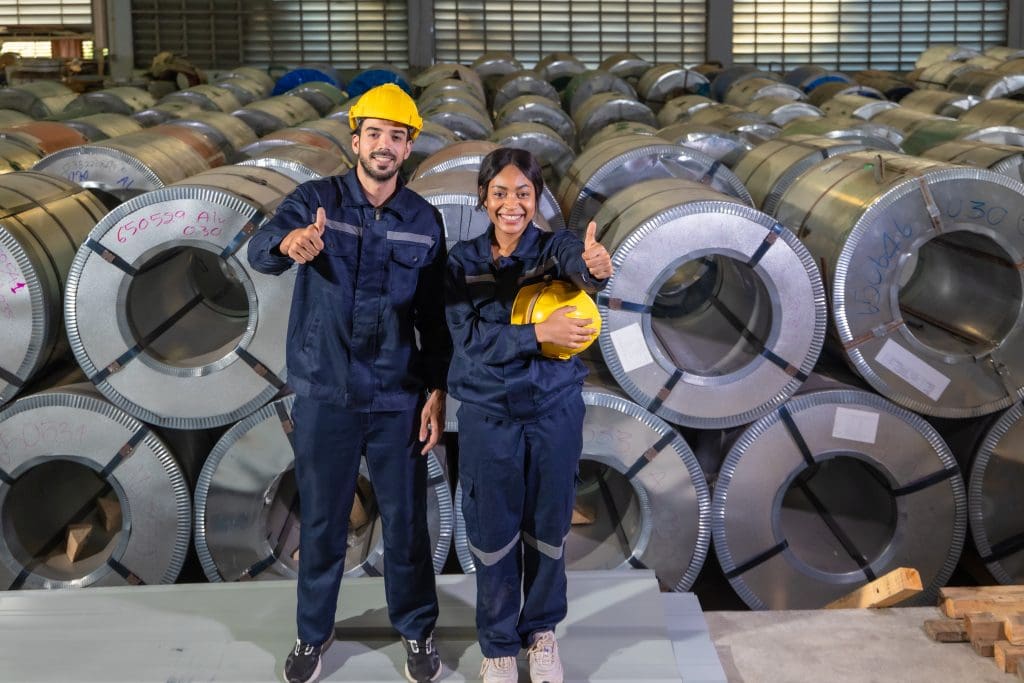
Consider Post-Processing Needs (coating, welding)
Post-fab operations add time and cost if not accounted for during design:
- Allow for coating thickness in hole sizes.
- Avoid incompatible materials if welding is required.
- Plan for surface prep on mating components.
This is especially important in heavy industries like oil and gas machinery fabrication.
Cost vs. Strength Tradeoffs
Higher-grade materials are often over-specified. Consider:
- Load paths and stress points when choosing material grade.
- Hybrid designs that use expensive alloys only where necessary.
- Cost per pound vs. cost per hour in machining.
Strategic material selection is one of the most overlooked ways to reduce production costs.
Tip #3 – Design with Tolerances in Mind
Avoid Over-Specifying (0.001” vs 0.0001”)
Tighter tolerances increase machining time and QA complexity. Instead:
- Limit 0.0001″ specs to essential interfaces.
- Use looser tolerances on non-critical features.
- Define fit types (e.g., clearance, interference) clearly in drawings.
This reduces unnecessary cost while maintaining function.
Tolerance Stack-Up Risks in Assembly
When parts assemble into a system, accumulated tolerances can misalign components:
- Consider how parts interact.
- Define datum structures.
- Use dowel pins or self-aligning features.
Waycon’s engineering team works with clients to identify and mitigate stack-up issues early.
Communicate Critical Surfaces to Machinists
Not all surfaces require the same finish or precision. To guide machinists:
- Use callouts for “critical to function” surfaces.
- Specify surface finish (Ra) where needed.
- Provide machining notes on drawings.
Clear documentation avoids mistakes during setup and inspection on the shop floor.
Tip #4 – Plan for Assembly from the Start
Design for Welding, Fastening, or Modular Assembly
Designing for assembly efficiency can drastically cut build times:
- Choose weld-friendly joint geometries.
- Use standard fasteners.
- Modularize large systems into sub-assemblies.
Waycon’s team frequently optimizes OEM machine designs for fabrication-ready builds that speed up floor-level assembly.
Optimize Access Points for Tools
Assembly and maintenance efficiency are critical for long-term performance:
- Leave clearance for wrenches, drills, or torches.
- Avoid recessed or blind fasteners.
- Add cutouts or access panels where needed.
Well-designed access improves serviceability and production throughput.
Consider Lifting, Rigging, and Operator Safety
Designs must be safe and practical for handling on the shop floor:
- Add lifting points and fork pockets for heavy parts.
- Consider balance and CG during movement.
- Follow OHSA or CSA guidelines where applicable.
Safety-first design avoids bottlenecks and protects your team.
Tip #5 – Validate Early with Prototyping
Use Digital Twin Simulation in CAD
Simulating motion and interference in SolidWorks helps identify:
- Fit issues
- Range-of-motion problems
- Part conflicts during movement
Digital twins provide a virtual sandbox to test assumptions before material is ever cut.
Rapid Prototype with CNC Machining
Quickly cutting a single prototype or small batch via Waycon’s CNC machining reveals real-world insights:
- Fit-up accuracy
- Assembly ease
- Design oversights
Our prototyping services have supported unique builds like the hybrid electric truck cab for Edison Motors.
Get Feedback from the Manufacturing Floor
The most valuable design feedback often comes from the people building your parts:
- Review prototypes with fabricators.
- Observe first-article builds.
- Refine designs based on input from welders, machinists, and assemblers.
Waycon bridges the gap between design and production with a deeply collaborative workflow.
Tools We Use at Waycon for DFM Success
SolidWorks for Smart CAD Design
Our engineers use SolidWorks to:
- Create parametric, editable models
- Analyze clearances and loads
- Generate manufacturing-ready 2D drawings
CAD models become the foundation for buildable, efficient designs.
Mastercam CAM for Efficient Toolpaths
Once CAD is approved, Waycon uses Mastercam to:
- Optimize toolpaths
- Simulate machining
- Minimize machine time
This ensures each part is programmed for speed, accuracy, and cost-efficiency.
QA Systems to Check Build Readiness
Before production:
- Drawings are checked against manufacturing standards.
- Fixtures and jigs are reviewed.
- Materials are validated for performance.
This QA-first mindset ensures your design translates smoothly into finished equipment.
Final Thoughts: Make DFM a Team Habit
Involve CNC Shops Early in the Design Phase
By collaborating with a trusted CNC partner like Waycon, you can:
- Catch manufacturability issues early
- Receive input on tolerances and materials
- Improve lead time projections
This proactive partnership results in better, faster builds.
Create Design Checklists Before Submitting Drawings
Before sending files to your fabricator:
- Confirm tolerances are appropriate
- Check for tooling access
- Ensure all finishes and treatments are called out
Waycon’s engineering team can assist with pre-flight checks to streamline production.
Iterate Based on Shop Floor Feedback
DFM is not a one-time process. As builds progress:
- Revisit designs for simplification
- Apply insights to future projects
- Share lessons across design teams
With every project, DFM becomes a smarter, leaner process and with Waycon’s custom machinery expertise, your team gains a long-term manufacturing partner dedicated to continuous improvement.
